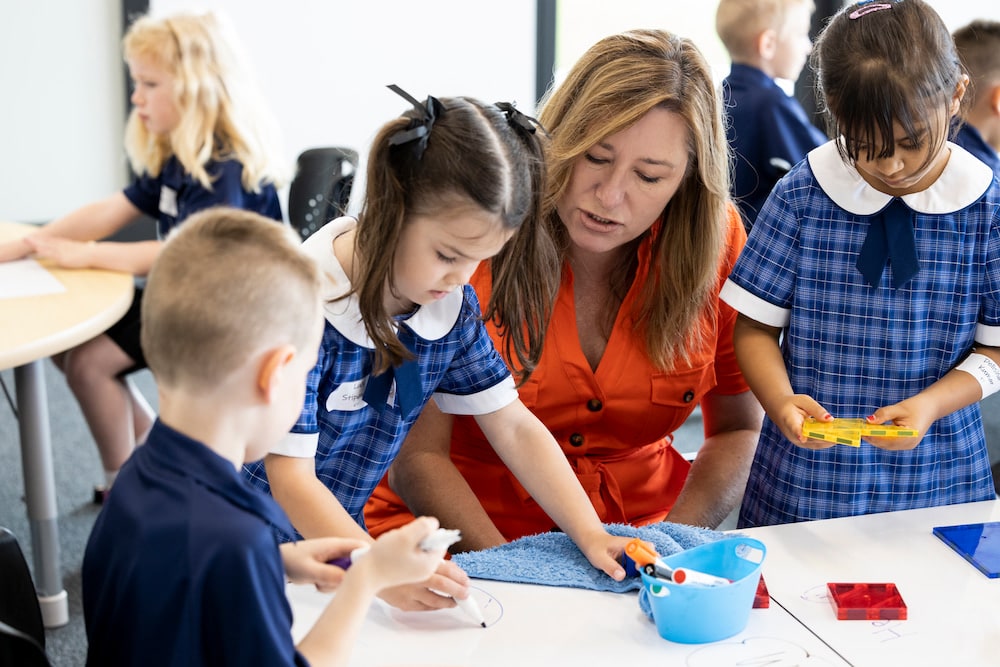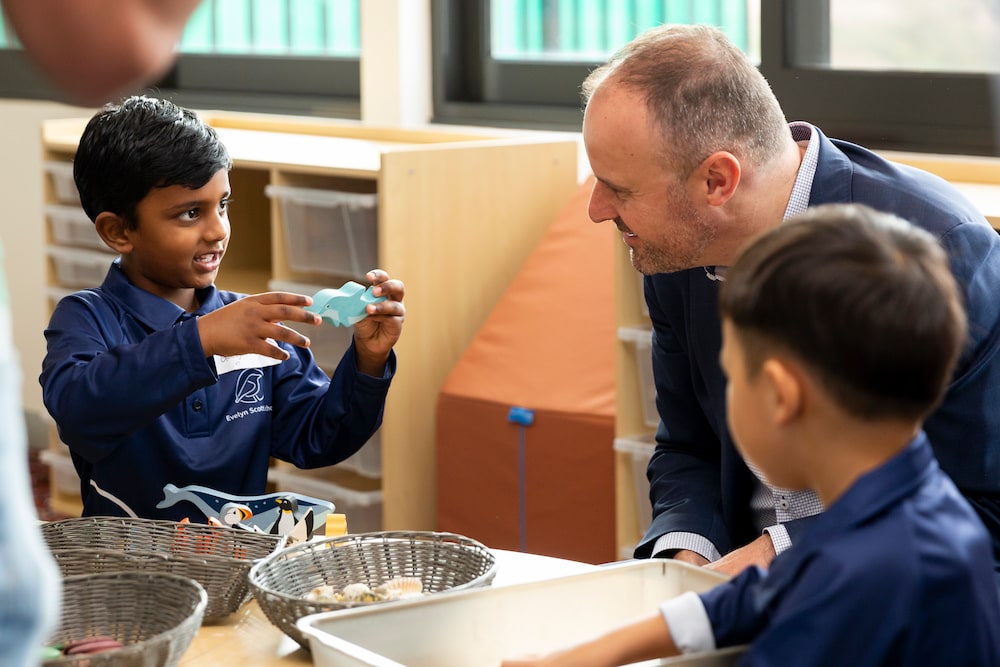New schools will be built in the Gungahlin region, and others expanded, to meet the demands of a rapidly growing population, the ACT Government announced yesterday.
A high school in Taylor, 4km from the Gungahlin Town Centre, will open its doors to 800 students at the start of the 2024 school year. The government will allocate $2 million for scoping and design work this year.
Six hundred more primary students will attend the Margaret Hendry School in north Gungahlin from the start of the 2023 school year. Work will begin this year, at a cost of $1 million.
Another 800 students from years 7 to 10 will attend a high school in the new suburb of Kenny. The government will spend $24.4 million for supporting road infrastructure and enabling works. The community will be able to use the school’s multi-purpose double gymnasium.
The school projects will cost $27.4 million under the 2020–21 budget, Chief Minister Andrew Barr said.
Gungahlin is one of the fastest growing regions in Australia, and student numbers in ACT public schools are increasing by 3% each year, Mr Barr and Yvette Berry, Minister for Education and Youth Affairs, said.
Ms Berry said the public schools will also be emissions-free, contributing to the ACT Government’s net zero emissions target by 2045.
According to the 2021 Report on Government Services (ROGS), published yesterday (Tuesday 2 February), the ACT has the highest participation in early childhood education and vocational education and training in Australia.
More than half (56.6%) of children aged 0 to 5 years attended an Australian Government-approved early childhood service in 2020 – the highest percentage in the country, compared with the national average of 44%.
The ACT Government is making early childhood free for all three-year-olds under Set up for Success, the government’s plan for early childhood education in the ACT for the next decade, beginning with vulnerable and disadvantaged children. Five hundred places are available in early childhood and education care services, and 100 additional places are available to Aboriginal and Torres Strait Islander three-year-old children at a Koori Preschool.
“This takes the cost of early childhood education away from parents,” Ms Berry said. “It is so important to start the learning journey for a child once they start primary school.”

The ACT Government will also provide scholarships and funding for early childhood educators to obtain deployments and certificates. Early childhood educators are some of the lowest paid workers in the country for the qualifications they have, Ms Berry said; this will make sure their work is valued, and give the ACT the best qualified workforce in the country.
ACT students performed better on average than students across Australia in mathematics, scientific literacy, and reading literacy, according to the most recent OECD’s Programme for International School Assessment (PISA) test. The ACT ranked third in reading (Australia ranked 17th), fourth in Science (Australia ranked 18th), and 11th in maths (Australia ranked 30th).
Under the Future of Education Strategy, all ACT public schools are adopting a student-centred approach to learning, and focusing on STEM (Science, Technology, Engineering and Mathematics) subjects to prepare students for jobs that do not yet exist, Ms Berry said. The ACT Government is also continuing to invest in digital education and provide laptops and tablets.
“Providing access to the tools that students need ensures that irrespective of family circumstances, every student has equal opportunity to learn wherever they are and whenever they need it,” Ms Berry said.
Nearly all – 93% – of young people who graduated in 2018 were employed or undertaking further study in 2019, according to the most recent ACT Post School Destinations and Pathways report (2019).
The ACT had the highest proportion of government-funded VET students participating in courses at Certificate III, Diploma level or above, and 91.1% of all government-funded ACT VET graduates were employed and/or continued on to further study after completing a course.
Chris Steel, Minister for Skills, said this was “a fantastic outcome” that compared favourably with the national average of 84.4%.
“The ACT is tracking well in providing Canberrans with quality education and training,” Mr Steel said.
Over nine in 10 (91%) government-funded Aboriginal and Torres Strait Islander VET graduates were employed and/or enrolled in further study after they completed their training – the highest proportion in the country, and almost 10% higher than the national average of 81.7%.
Around 85.7% of government-funded ACT VET graduates with a disability were in employment and/or in further study after completing a course, more than 10% higher than the national average (73.4%).
In addition, 86.8% of ACT employers were satisfied with the VET provided to their employees – above the national rate of 77.6%.
“The data demonstrates the ACT Government’s commitment to investing in high quality vocational education and training programs that support Canberrans to reach their full potential,” Mr Steel said.



